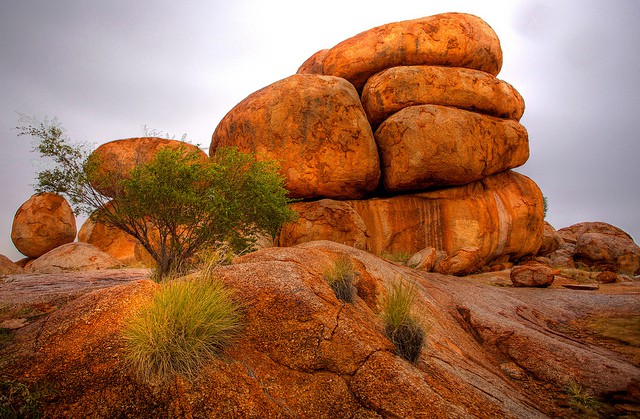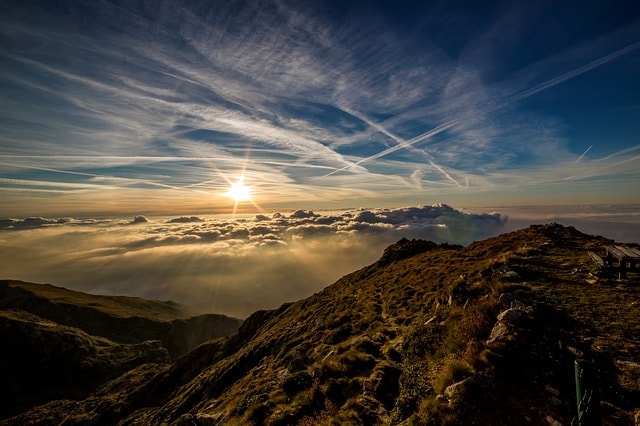Types and Causes of Mass Wasting/Mass Movement of Rocks

Mass wasting can be defined as a geomorphic process. A geomorphic process is a natural course of weathering, erosion and deposition that causes alteration of the surface materials and landforms of the earth.
Mass wasting is also known as slope movement or mass movement. It can be described as the potency by which certain landforms like soil, sand, and rock and the layer of loose material covering the bedrock of the earth, move downslope. This movement is not in fragments but enmasse, mostly under the force of gravity but frequently affected by water and water content as in submarine environments and mudflows.
It can also be defined as wasting on a massive scale of the outer crust of the earth. This wasting is in a constant state of movement towards the lower heights.
Mass movement or mass wasting is a natural phenomenon initiated by the force that attracts any object with mass. In recent years, the definition of mass movement has been enlarged to include mass wasting processes or natural erosion and the slow submerging of the Earth’s ground surface.
Mass movement or mass wasting usually occur along steep-sided hills and mountains. This is often aided by running water and plays a significant part in the alteration of landforms. This slipping of large amounts of rock and soil is seen in landslides, mud slides, and avalanches.
Causes of Mass Wasting or Mass Movement
There are a number of factors besides gravitational pull that initiates mass movement.
Volcanic activity
Volcanic eruptions many times causes huge mudflows. The snow cover of a volcano melts in the heat and mixes with the soil to form mud as the magma in the volcano stirs preceding an eruption. This causes mass movement.
Earthquake shocks results in portions of mountains and hills to break loose and slide downwards. The vigorous shaking of an already-unstable slope by seismic waves may cause it to fail. Typically, the higher the magnitude of an earthquake, the more mass wasting will occur.
Landslides
When masses of rock, earth, or debris move down a slope there is landslide. The movement may be small or massive, slow or at a high speed, carrying along with it considerable amount of soil. These are sudden movements and with the effect of geological agents such as water, wind and can cause a movement of land.
A landslide, is the most common form of mass wasting that includes a wide range of ground movements, such as rockfalls, which occurs when any rock or boulder falls without any obstruction down a cliff.
Submarine landslide occurring underwater, in coastal and onshore environments are caused when certain pre-existing factors create conditions that make the underwater area/slope prone to move from its primary position causing a landslide.
Mudslide
Also known as debris flows, mudslides especially after torrential rain or cloud burst, are moving body of rock, earth, and other debris saturated with water causing mass wasting or mass movement. When water rapidly accumulates in the ground, during rapid snow melt, it changes the surface of the area into a flowing river of mud. A mudflow is a flowing mixture of debris and water, usually moving down a channel.
Landslides should not be confused with mud flows, a form of mass wasting involving very to extremely rapid flow of debris that has become partially or fully liquefied by the addition of significant amounts of water to the source material.
Weathering and erosion
Human modification of the land or weathering and erosion help loosen large chunks of earth and start them sliding downhill.
Ice wedging
Ice wedging causes mass movement. During a earthquake, loose rock particles dislodge creating crevices. Ice wedging is the formation of ice crystals in the tiny crevices between rocks. When the water freezes, it expands, putting force on the rocks which break apart and fall from mountains slopes.
Other causes
Vibrations from machinery, traffic, weight loading from accumulation of snow; stockpiling of rock or ore; from waste piles and from buildings and other structures.
Another natural cause of mass wasting is excess water on a slope due to melting snow or heavy rains. This cause slope increases. If the sediment is loose, the excess water moves it down the slope, causing mass wasting.
Humans are also responsible for mass wasting. Deforestation is one of them. It exposes soil to erosion leaving it without protection against the force of raindrops, which moves loose rocks and soil.
However, the most important factor to initiate mass movement is the gravitational pull of the earth.
Types of Mass Wasting
Different types of mass wasting or mass movement can be identified.
Rock falls and rockslides
A slide – can be defined as a descending rock mass remaining more or less solid and moving along a definite surface. A rock slide occurs when there is a rapid sliding of a mass of bed rock along a slanted surface which is weak or faulty. This type of mass wasting occur when pieces of rock break loose from a steep rock face or cliff due to various weathering agents like wind and water. These forces gradually cut the rocks for hundreds of years lodging them off their base due to undercutting. Eventually the rock is dislodged.
Rockslides usually follow a zone of weakness, such as a bedding plane or foliation plane which is composed of layers of metamorphic rock. These are weak zones and mountain streams flowing through these areas continuously erode the rock surface by sippage reducing rock strength. Any impact or force in these areas cause break in the rock mass into rubble. This is also known as rock avalanche.
Debris flows
Debris flows are defined as mass‐wasting events in which turbulence occurs throughout the mass. Slope material that becomes saturated with water may develop into a debris flow or mud flow. The resulting slurry of rock and mud may pick up trees, houses and cars, thus blocking bridges and tributaries causing flooding along its path.
They are most common in alpine areas and cause severe damage to structures and often claim human lives. This flow of mud can be initiated by slope movement or shallow landslides. The resulting effect often blocks streams causing temporary floods.
Creeps
Soil creep is a long term process of mass movement. The combination of small movements of soil or rock in different directions over time directed by gravity gradually tend to downslope. The creep is proportional to the steep of the slope. The creep makes trees and shrubs curve to maintain their perpendicularity, and they can trigger landslides if they lose their root footing.
This happens at a rate that is not noticeable to the naked eye and is the slow downward progression of rock and soil down a low grade slope; Creeps are really the sum of numerous small movements of slope material caused by gravitational force.
Slump
One of the types of mass wasting that is an example of the slope failing is a slump. Slump is defined as sliding of coherent rock material along a curved surface. Slump usually results due to an undercutting of the mountain’s base such as by wave action, a meandering river, or construction.






